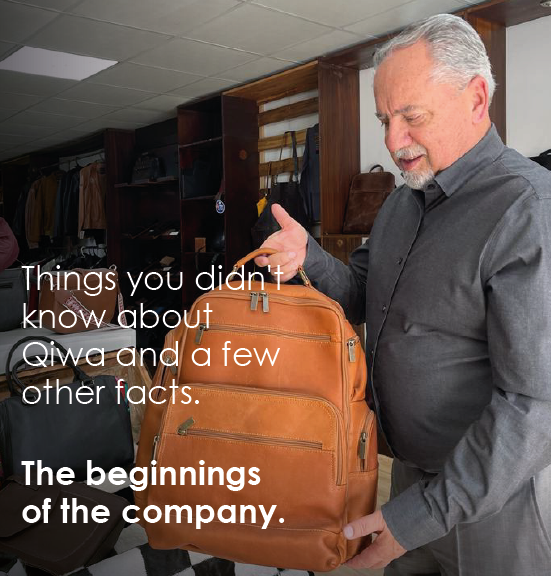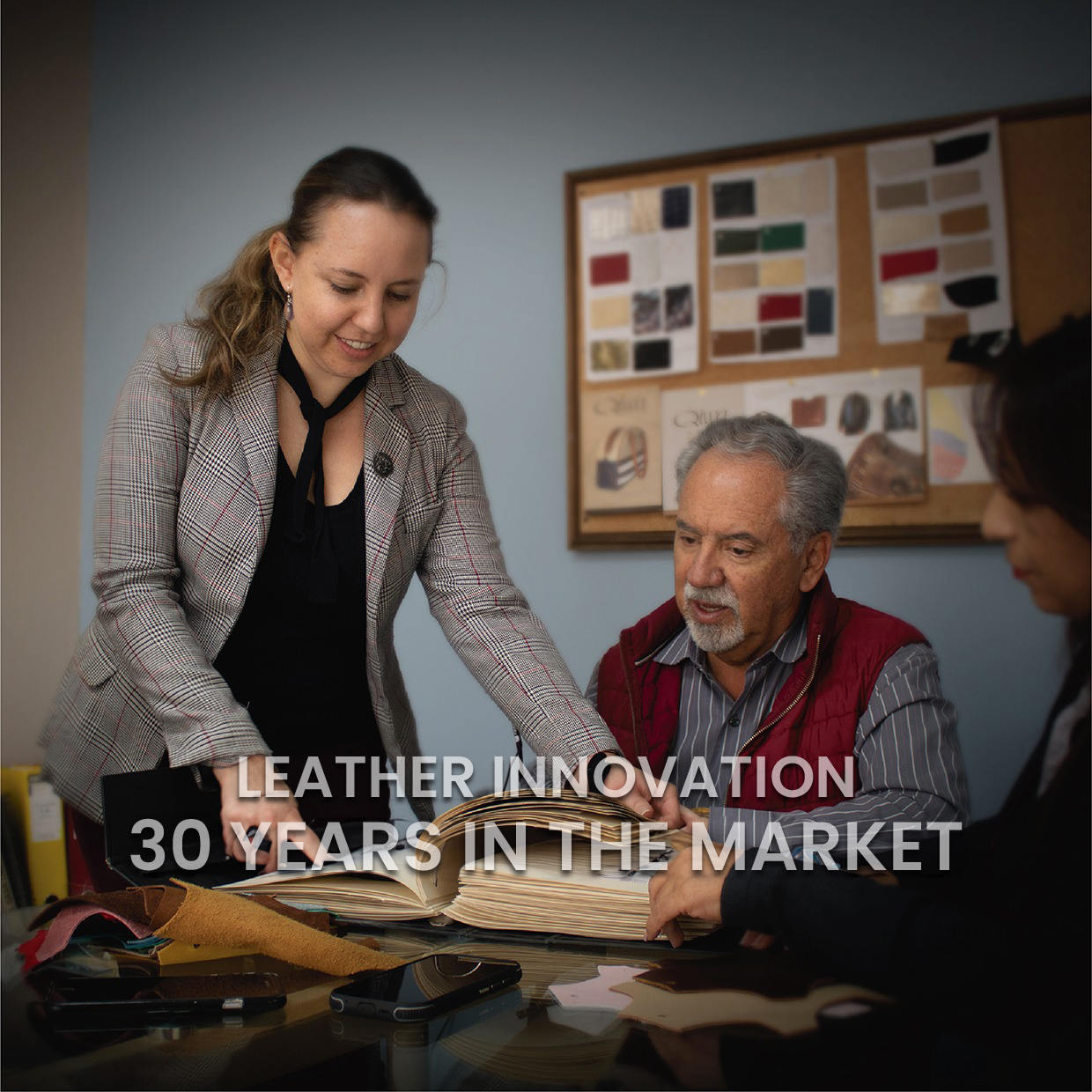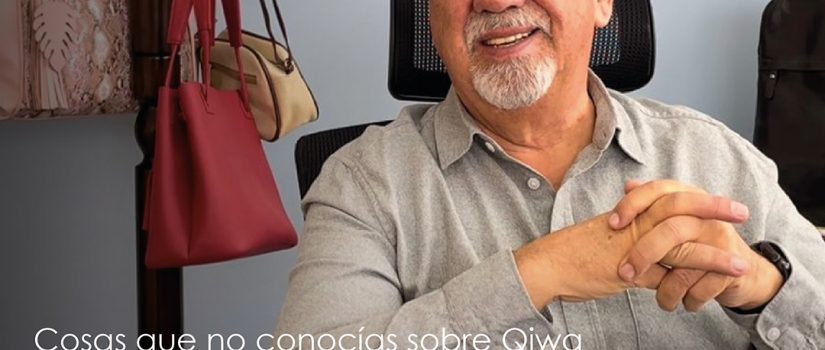THINGS YOU DIDN'T KNOW ABOUT QIWA AND A FEW CURIOUS FACTS

As we know, Qiwa has been a benchmark in the manufacturing of leather products in the country and in the city of Cuenca. Its more than 30 years of experience in the leather goods market have given rise to many stories. It's interesting to imagine the things that must have happened in its hallways, warehouses, production areas, and more.
However, this time we will focus on the facts you might not know, anecdotes, and a few curiosities about Qiwa and the world of leather.
All of this, guided by Engineer Juan Malo, the head of the organization.
1. A Dream, an Idea, a Great Brand...
As we all know, great brands arise from somewhere and don't just appear out of thin air.

In the case of Qiwa, it emerges from the experience of the company's owner, as he began working at the renowned tannery in Cuenca, Renaciente, in his early days. To understand how it all begins, we'll go back to the time when Engineer Juan Malo was a student:
"When I was in university, my professor was Frank Tosi, the owner of Curtimbre Renaciente. He organized a contest among his students, the prize for which was to become the sales manager of Curtimbre Renaciente. I participated with some friends and was fortunate to win. I became the sales manager of Curtimbre Renaciente for many years. Initially, I thought I would be there for a reasonable amount of time; my inclination was more towards real estate and those sectors. But I started to discover the magic of leather.
One of the things that caught my attention about leather is its vastness, an immense number of uses. Every aspect of leather is enormous. Many years later, when we defined the leather cluster, which encompasses all the links in the work chain, we discovered that there were around 500,000 people working in this area in the country. It's essential to consider that leather is a byproduct of livestock, and in this area alone, more than 200,000 people are estimated to work. (Engineer Juan Malo)

In that sense, the leather sector is enormous, and when one understands everything involved in production and the business behind it, you realize there is enormous potential. So, there are many possibilities, and personally, I never wanted to leave this field. I loved it; that's why we started with leather."
Later, after working at the tannery for 10 years, Engineer Juan Malo founded Curtesa, which started its activities on January 2, 1985, and its main activity today is being a wholesaler of hides and leather. However, when the company opened its doors, its main activity was export.
After some time, Curtesa became a reference in leather export, distributing this material to countries such as Venezuela and Central America, always with the idea in mind of expanding to a market that not only encompasses the country.
And so, between university contests, significant challenges abroad, and the charm of leather, Curtesa was born, along with its successor, Qiwa.

2. The Leather War
You might already know this fact, but there has always been a conflict between people, and everyone wonders: Is real leather better, or is synthetic better? Some time ago, it wasn't precisely known why leather was always the preferred material for making useful and long-lasting garments. But to put it briefly, it's due to historical context, as there is evidence that working with leather was one of the first activities humans developed. They needed something to cover themselves, and what better material than what they had at hand.
Later, with the advancement of technology and chemistry, polymers were explored, from which synthetic leather derives, and they can also have exceptional quality and durability.

So, since these two situations crossed paths, the rivalry began between people who worked with real leather and synthetic leather. According to Engineer Juan Malo:
"I remember that at the tannery where I worked, when a sales agent brought a briefcase made of synthetic leather, the production manager showed significant resistance in trusting the quality of that material; he really didn't like it. However, things have changed nowadays, and there are excellent quality synthetics, but the higher the quality, the more it costs, so it levels with the price of leather."
Accordingly, we could say it's a matter of traditions, tastes, and budget to a certain extent, but it's interesting to know that this conflict existed, isn't it?
3. What have been the most significant achievements of the company?

Throughout the years, Qiwa has achieved significant milestones thanks to the conviction and commitment of its stakeholders. Here are some of them:
1. The first one is the specialization that could be given, not only to our company but to the entire leather sector, through the leather cluster, from 2000 to 2005, through non-refundable funds obtained from CAF, IDB, USAID, the United Nations, and other entities that supported these programs, which were very beneficial for companies working with leather goods.
2. The second one was a great challenge because a buyer from the United States requested 700 jackets monthly, which was more than 12 times the size of our daily production. But thanks to the funding from the entities mentioned earlier, this project could be initiated. With the trust deposited in us by customers and allied companies, we were able to produce more than 3,500 pieces monthly. Later on, we took contracts for the United States for more than 10,000 monthly bags for motorcyclists.
3. Due to the need to cover the large quantities of products mentioned earlier, there arose the need to create an alliance with other companies so that we could meet the demand, thus strengthening relationships between suppliers and, in turn, enhancing our presence in the national and international markets.
4. What is the leather cluster?

The word "cluster" comes from an English term and translates as the work that exists within the production chain of a specific industry.
In the case of leather, it begins with the production of the livestock sector, which is another industry; however, it is part of everything that leads to leather production. Within this, there is another subset of activities such as the chemical sector, treatment, design, leather production. Finally, the result of this entire process is a beautiful bag, wallet, coat, shoe, among others, that is sold to retailers or wholesalers, completing the cycle.
With much effort and participation, Engineer Juan Malo and his colleagues managed to consolidate the leather cluster in Azuay, which brought many benefits to various artisans and producers in the area.
Having said that, we hope you enjoyed reading this blog as much as we enjoyed writing it, that the information has been useful to you, and that you have learned a little more about who we are at Qiwa.

One Reply to “COSAS QUE NO CONOCÍAS SOBRE QIWA Y UNO QUE OTRO DATO CURIOSO”
Flavio Banegas
17/07/2023 at 8:03 am
Me gusto mucho vuestra historia